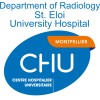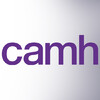
Study on Allopregnanolone and Depression in Perimenopausal Women
DepressionThis study aims to identify how the progesterone metabolite allopregnanolone affects behavior and neurobiology that may underlie perimenopausal depression.

Internet Based Psychological Support
DepressionStress1 moreThe investigators have developed interactive, multimedia-intensive, computer-based treatment programs that include depression (Problem-Solving Therapy), stress management, and conflict management. Together the three modules are called PATH. The problem-solving module is based on an evidence-based psychotherapy called Problem-Solving Therapy in which depressed patients identify problems in their lives and work through a structured format for solving these problems. We have subjected the problem-solving module to Phase 1-3 feasibility, acceptability and efficacy trials which have been positive and without adverse events. The conflict program uses a cognitive-behavioral-therapy-based approach. The program includes a conflict briefing, an interactive conflict simulation, a conflict assessment tool, an interactive training exercise in interest-based negotiation, and a cognitive restructuring exercise. The stress program also uses a cognitive behavioral therapy (CBT) approach. In the program, the mentor introduces the "stress pyramid", which demonstrates how stress triggers can lead to different feelings, actions and thoughts, which are analogs to the CBT realms of dysfunctional emotions, maladaptive behaviors, and faulty cognitive processes. The stress management content is delivered over 6 sessions, with each session including exercises in the 3 domains of thoughts, feelings, and actions. The program includes briefings, cognitive restructuring exercises, interactive scenarios, and self-assessments. This program has been evaluated with law and business students and was shown effective in reducing stress levels. The purpose of the current study is to make the problem-solving, stress, and the conflict modules available through the internet for any adult 18 or older in order to assess their feasibility, acceptability and effectiveness under naturalistic conditions.

Study of the Effectiveness of Vestibular Stimulation Treatment in the Depressive Phase of Bipolar...
Bipolar DisorderDepression1 moreVestibular stimulation has been shown to be a very effective noninvasive treatment for major depression. Bipolar disorder is a mental illness that presents cyclic sequences of depressive and euphoric states. Depressive phases of bipolar disorder are difficult to treat and usually are resistant to actual available treatments. This study investigates the effectiveness of a particular technique of vestibular stimulation in a group of 120 bipolar type I and II patients. After randomization 60 of them will receive specific vestibular stimulation (experimental group) and 60 will receive a sham vestibular stimulation.The study will conducted in Vest Brain, Centro de Estudios Neurovestibulares, in Chile.

Ketamine Alcohol (in Treatment-Resistant Depression)
Magnetic Resonance ImagingMajor Depression1 moreA single subanesthetic dose infusion of the N-methyl-D-aspartate (NMDA) receptor antagonist ketamine has rapid and robust antidepressant effects in patients with treatment-refractory major depressive disorder (TRD). A family history of an alcohol use disorder (Family History Positive, FHP) is one of the strongest identified predictors of an improved antidepressant response to ketamine. Like ketamine, alcohol is a functional NMDA receptor antagonist. FHP is associated with differential response to both alcohol, e.g. decreased body sway and plasma cortisol, and ketamine, e.g. blunted psychotomimetic side effects. One of the primary mechanistic hypotheses for ketamine's antidepressant action is the acute intrasynaptic release of glutamate from major output neurons, e.g. cortical pyramidal cells. Preliminary clinical studies have demonstrated this acute glutamate "surge" in response to subanesthetic dose ketamine. Based on these findings, the investigators hypothesize that ketamine's enhanced antidepressant efficacy in FHP TRD subjects is, at least in part, attributable to increased glutamate release relative to TRD subjects without a family history of alcohol use disorder (Family History Negative, FHN). The investigators also hypothesize that alcohol similarly augments glutamate release in this bio- logically-enriched subgroup, which may be a more objective biomarker than family history status. To test these hypotheses, the investigators have designed a now two-site, open-label study of 21-65 year old medically and neurologically healthy, currently moderately-to-severely depressed TRD patients. In total, the investigators plan to recruit 25 FHP and 25 FHN TRD subjects. All subjects must not have a lifetime substance use disorder (except nicotine or caffeine), no lifetime history of an alcohol use disorder and socially drink. The experimental portion consists of two phases. The preliminary first phase is a medication taper (if needed) and psychotropic medication-free period. The experimental second phase comprises two pharmacokinetically-defined basal-bolus alcohol and one subanesthetic dose (0.5mg/kg x 40 minute) ketamine infusions. The first alcohol infusion will establish the pharmacokinetic profile for a subsequent alcohol infusion occurring during 7T-magnetic resonance imaging (MRI), both resting-state functional MRI (rs-fMRI) and magnetic resonance spectroscopy (MRS) to detect glutamate in the ventromedial prefrontal cortex/ventral anterior cingulate cortex (vmPFC/vACC). The ketamine infusion will also occur during 7T-MRI. The primary outcome measure is group mean change in Montgomery-Åsberg Depression Rating Scale (MADRS) score from pre-ketamine infusion (baseline) to one week post-infusion, where the investigators observed ketamine's greatest antidepressant effect in FHP TRD. Additional outcome measures are vmPFC/vACC glutamate change in response to ketamine and alcohol challenge based on family history status. In summary, this study will provide key mechanistic information on ketamine's improved antidepressant efficacy in a biologically-enriched subgroup. This will contribute to the systematic development of more efficacious, personalized treatments for major depression in an effort to reduce its enormous public health burden.

Behavioral Self-activation and Virtual Reality in Depression
DepressionDepression is a major handicap in daily life and is often treated by behavioral activation (CA), including the Brief Behavioral Activation Treatment for Depression (BATD).The CA principle is to set up activities, in keeping with the values of the individual. Other tools associated with the CA deserve to be explored as virtual reality (VR), which offers scenarios and sensations similar to real life and a sense of life. in a safe and controlled environment, with the support of the therapist.The main objective is to compare the effectiveness of the program "BATD with RV" versus "BATD without RV" on the intensity of the depressive symptomatology and CA in everyday life. Methodology: This is a randomized, blinded study. Inclusion criteria are: 18 to 70 years old; unipolar depression diagnosis; Showing a score of ≥ 17 on the BDI-II. 80 subjects will be recruited over 24 months and randomized into 2 groups: 1) intervention group program BATD in VR; 2) BATD program intervention group without RV, lasting 45 minutes. Judgment Criteria: The effectiveness of the intervention will be evaluated by the BDI-II scale and the Behavioral Activation for Depression Scale (BADS). Outcomes: A new management of depression (AC with RV) to improve the quality of life of the patient; proof of its effectiveness; a generalization of this care; and recognition of its effectiveness in the scientific community.

Effectiveness and Implementation of a Mindfulness Intervention for Depressive Symptoms Among Adults...
Depressive SymptomsStress3 moreThe objective of this project is to examine the clinical effectiveness of a mindfulness intervention on reducing depressive symptoms among socio-economically disadvantaged, racial/ethnic minority adults and explore factors related to implementation in a Federally Qualified Health Center (FQHC). This research will be used to develop a generalizable model for delivery of streamlined mental health interventions in community based settings that will be broadly disseminated and scalable to other populations. Black and Hispanic adults are more likely than those who are White to receive depression treatment in primary care, where antidepressants are the most commonly offered treatment. However, Black and Hispanic adults are less likely than Whites to find antidepressants acceptable. A mindfulness depression intervention provided within primary care may be more accessible and acceptable for low-income, racial/ethnic minority individuals, a severely underserved population. The investigators will conduct a randomized controlled trial to test the clinical effectiveness of a mindfulness intervention (M-Body) on reducing depressive symptoms, compared to usual care, among low-income racial/ethnic minority adults in a FQHC. The M-Body intervention is based on Mindfulness Based Stress Reduction and has been tailored for the FQHC setting and patient population. Adults (N=254) with depressive symptoms will be recruited from a FQHC in the Chicago, IL area that serves majority racial/ethnic minority individuals (90%) living at or below the poverty line (74%). Half of the patients will be randomized to the M-Body intervention arm where they will receive 8-weeks of mindfulness training led by FQHC staff and the other half will be randomized to usual care. Information on factors relevant to implementation of the intervention in the FQHC will be obtained by convening a series of workgroups and individual interviews with FQHC staff, executive leadership and community stakeholders. Specific Aims: 1) Determine the effectiveness of M-Body on reducing depressive symptoms compared to enhanced usual care for racial/ethnic minority adults in a FQHC; 2) Explore potential mediators (stress related biomarkers, mindfulness) and moderators (age, personal, social, environmental stressors) of the intervention's effect; 3) Conduct a broad assessment of organizational and individual agency factors related to preparation and implementation of the M-Body intervention in a FQHC using a mixed methods approach.

RESIST : Administration of MAP4343 in Antidepressant Non-Responders Patients Experiencing a Major...
DepressionThe study is a phase II, double-blind, randomized, placebo controlled, parallel, multicentric study in 110 patients with drug resistant depression.

Minocycline as Adjunctive Treatment for Treatment Resistant Depression
Treatment Resistant DepressionMajor depressive disorder (MDD) is a leading cause of disability worldwide. Up to 50% of patients experience treatment resistant depression (TRD), which accounts for a vast majority of disease burden. Current medications for TRD have limited efficacy and can be associated with intolerable side effects. Therefore, there is a need for finding new treatment targets. Accumulating evidence suggests some patients with MDD including those with TRD, display brain inflammation. Thus, patients with TRD may benefit from medications that can reduce this inflammation. Minocycline is an antibiotic which can cross the blood-brain barrier and has effects on several systems implicated in depression. The principal investigator led the first pilot study of minocycline as an add-on treatment in TRD demonstrating that it led to a significant reduction in depressive symptoms compared to placebo and these findings require replication in a larger sample to confirm the efficacy and tolerability of this treatment approach. This study is a 12 week, double-blind, placebo-controlled trial of minocycline as add-on treatment for patients suffering from a major depressive episode who have failed to respond to antidepressant treatment, confirmed by the Structured Clinical Interview for DSM-5 (SCID-5) and the Antidepressant Treatment History Form (ATHF) at screening. After screening and randomization to the two parallel arms of the trial, 50 patients will receive minocycline added to treatment as usual (TAU) and 50 patients will receive placebo added to TAU. Clinical assessment will include the Hamilton Depression Rating Scale (HRSD-17), Clinical Global Impression scale (CGI), World Health Organization Quality of Life Short Form (WHOQOL-BREF), and Generalized Anxiety Disorder scale (GAD-7), administered at each study visit (baseline, week 2, 6, and 12). Side effects checklists will be undertaken at each visit. Minocycline will be started at 100 mg once daily and will be increased to 100 mg twice daily at two weeks. Secondary outcomes include inflammatory biomarkers measured at baseline, weeks 6 and 12. This trial will provide further evidence of minocycline's efficacy and acceptability as a treatment option for patients with TRD and provide insights into its mechanism of action.

Antidepressant Discontinuation in Treatment Resistant Depression
Treatment Resistant DepressionThe purpose of this study is to compare the effects on depressive symptoms of subjects who discontinue serotonergic antidepressants (a certain type of antidepressant, such as Prozac, that works on serotonin receptors in the brain) with the effects on depressive symptoms of subjects who continue to take serotonergic antidepressants. During this study, subjects will also be presented with the opportunity to undergo genetic testing for the serotonin gene transporter which has a short or long form. This is being done because it has been demonstrated that genetic testing improves outcome while treating treatment-resistant depression.

Add-on Buprenorphine at Analgesic Doses for the Treatment of Severe Suicidal Ideas During a Major...
Suicidal IdeationMajor Depressive EpisodeThis study aims at investigating if adjunctive buprenorphine at low dose to treatment as usual is effective in reducing severe suicidal ideas in major depressive episode, and at determining the most effective dose.
